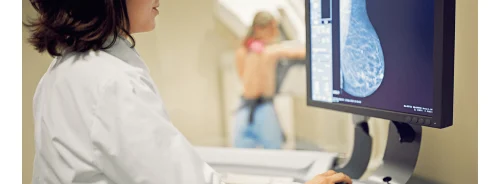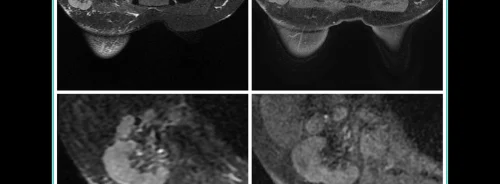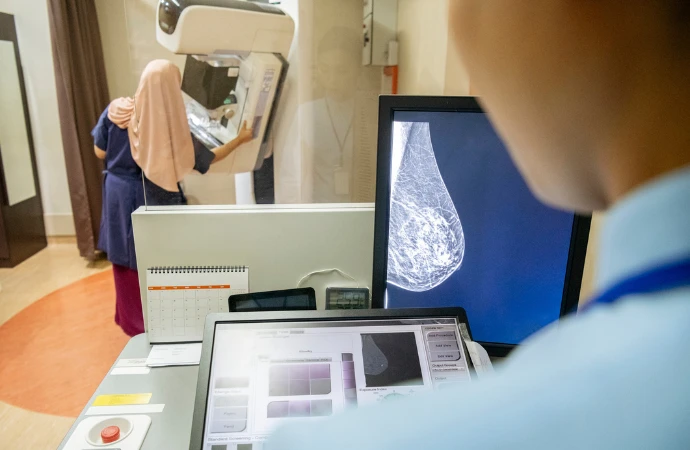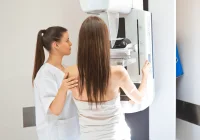The United States Preventive Services Task Force (USPSTF) has updated its recommendations for breast cancer screening, suggesting that women should begin regular mammograms at the age of 40 rather than waiting until 50 as previously advised. This decision, published in JAMA, was reached by one of the foremost independent organisations setting guidelines for cancer care, could impact insurance coverage and assist healthcare providers in determining optimal screening schedules for their patients.
What is in this update of the USPSTF recommendations?
The USPSTF's updated recommendations for breast cancer screening advise initiating screening at age 40, departing from its previous guidance, which suggested starting at age 50. They propose biennial screening mammograms for women aged 40 to 74. This adjustment brings the USPSTF more in line with other organisations advocating for earlier screening initiation. Previously, the USPSTF recommended biennial screening for women aged 50 to 74, without universally endorsing screening for women in their 40s, instead leaving the decision to individual patient-doctor discussions. The revised guidelines reflect a shift in stance, emphasising the importance of earlier screening initiation.
While the USPSTF continues to advocate for biennial screening, some organisations endorse annual mammograms. Additionally, the USPSTF concluded that there was insufficient evidence to recommend supplemental screening with MRI or ultrasound in women, regardless of breast density (grade of I). Moreover, the task force recognises the need to address disparities in breast cancer screening access and outcomes among different racial groups in the United States.
Regarding women over 75, the USPSTF reported that it found insufficient evidence for screening women 75 and older (grade of I). This grade indicates that the USPSTF believes that when these services are offered, patients should understand the uncertainty about the balance of benefits and harms.
Emerging Trends in Breast Cancer Screening
The new recommendations from the USPSTF reflect two key trends supported by recent research. Firstly, studies indicate an increasing number of breast cancer diagnoses among women in their 40s, leading to the conclusion that screening this demographic offers more benefits than potential harms. Additionally, the task force recognises the disparity in breast cancer outcomes for Black women, who are more likely to be diagnosed in their 40s and with more aggressive forms of the disease. While earlier screening for this group is likely to save lives, further research is needed to determine if Black women should follow a different screening schedule altogether.
Divergent Approaches in Breast Cancer Screening Guidelines
The USPSTF's recommendations for breast cancer screening diverge from those of several professional organisations, such as the American College of Radiology (ACR), Society of Breast Imaging (SBI), the European Society of Breast Imaging (EUSOBI), and the American College of Obstetricians and Gynaecologists (ACOG). These organisations advocate for annual screening mammography starting at age 40 for women at average risk, continuing without an upper age limit. They also emphasize the importance of early breast cancer risk assessment, especially for Black and Ashkenazi Jewish women, suggesting it be conducted by age 25. Additionally, they propose tailored screening approaches for women with genetics-based increased risk, including MRI surveillance and annual mammography starting as early as age 25. Moreover, they recommend supplemental screening modalities such as breast MRI or contrast-enhanced mammography for high-risk women. These differences in guidelines underscore the unique approaches of each organisation in balancing the benefits of screening with potential harms like false positives and overtreatment.
Evidence from six breast imaging registries and two historic registries
The USPSTF based its 2024 breast cancer screening recommendations on a systematic review of evidence and utilised data from the Breast Cancer Surveillance Consortium (BCSC), a network comprising six breast imaging registries and two historic registries. Their assessment included individuals with factors linked to increased breast cancer risk, such as family history and dense breasts. While acknowledging the association between dense breasts and both reduced mammography sensitivity and increased cancer risk, the USPSTF found insufficient evidence supporting the effectiveness of supplemental screening with MRI or ultrasound in this group. Notably, the recommendations do not apply to individuals with specific high-risk factors such as genetic markers (e.g., BRCA1/BRCA2), previous radiation therapy to the chest, or a history of breast cancer or high-risk breast lesions. The task force has a separate recommendation addressing risk assessment, genetic counselling, and testing for BRCA-related cancer. It also highlighted ongoing trials, like the WISDOM trial, investigating risk-based screening, which may offer valuable insights into individualised screening approaches.
Balancing Benefits and Risks around early screening
Earlier screening for breast cancer is a contentious issue due to the balance between its benefits and potential harms. Detecting breast cancer early significantly improves the chances of cure, with nearly 100% curability at early stages, reducing the need for intense treatments and surgeries. Mammograms and screening have saved numerous lives. However, screening carries risks, such as false positives that lead to unnecessary biopsies and stress, particularly for younger women with dense breasts, where distinguishing normal from suspicious tissue is challenging, increasing false positives. There's also the risk of overtreatment, where women may undergo surgery or treatment for cancers that would never progress. Recommendations like those from the USPSTF aim to weigh these factors, considering the benefits against risks, particularly for the group in question. With rising diagnoses among women aged 40 to 49, the USPSTF concluded that the benefits of earlier screening outweighed the potential harms for this demographic.
Advancing Breast Cancer Screening: Towards Personalised Precision Approaches
The updated recommendations from the task force emphasise the transition towards personalised, risk-based breast cancer screening, moving away from a one-size-fits-all, age-based approach. This shift is supported by ongoing research efforts aimed at enhancing both breast cancer risk assessment and screening technologies. Under a risk-based screening model, leveraging advancements like artificial intelligence, women receive tailored screening recommendations based on individual factors such as family history, genetics, and ethnicity. This approach, coupled with improved screening technologies like contrast-enhanced mammography, holds significant potential for enhancing early detection.
This shift towards precision screening is to be recognised as the opportunity it presents to improve breast cancer detection. However, efforts should continue to fully integrate women into risk-based screening protocols. By adopting a personalised approach, disparities in screening access and outcomes based on factors like age, breast density, and race can be addressed.
While the updated USPSTF recommendations reflect progress at the intersection of technology and equity, critical evidence gaps remain. Further research is needed to explore the differential benefits of annual versus biennial screening for various demographic groups, including Black women. Additionally, studies are required to assess the effectiveness of supplemental screening modalities for women with dense breasts and to identify approaches to mitigate the risk of overtreatment.
Source: JAMA
Image Credit: iStock








